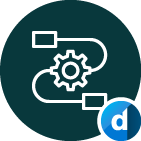dataminer.MediaOps
Harmonizing ICT and media for better planning, live operations, and file media operations
Transform your operations by creating a better, faster, and more cost-effective environment that is enjoyable to work in!


Propel yourself
into a data-driven future
dataminer.MediaOps transforms the media supply chain with data-driven automation. Built on the renowned DataMiner platform, the product harmonizes deep media expertise with ICT tech. Experience a seamless process from planning productions, and scheduling people, technical resources, or bandwidth, to running live media operations and automating file workflows.
Your solution for seamless media event planning, live operations, and file workflow automation
dataminer.MediaOps seamlessly blends information and communication technology (ICT) with media technology and workflows, introducing a new era of data-driven, automated, and simplified media operations.
Resource planning
and scheduling
dataminer.MediaOps provides a full suite to plan your events, reserve your technical, non-technical, and network bandwidth resources, and automate the event setup and teardown.
Live media
operations
dataminer.MediaOps integrates and combines planning tools with intuitive operator panels to enable live signal connection management and processor control.
Automation of file
and asset workflows
dataminer.MediaOps automates the media asset supply chain from file ingest and live recording to distribution and archiving.
Deliver your content
better, faster, and cheaper
dataminer.MediaOps revolutionizes media operations by combining modern ICT practices with deep media domain knowledge. With dataminer.MediaOps, M&E companies deliver better service quality and user experience, and they respond faster to business needs and technology innovations while increasing productivity and cost-effectiveness.
15+ years expertise
Data-driven operations
Modern ICT compliance
Quick operations
Instant scheduling
Automated orchestration
Resource optimization
Seamless integration
Continuous cost tracking
Simplify and automate your
media supply chain with DataMiner
dataminer.MediaOps comes with a set of ready-made applications, downloadable from the dataminer.services catalog, that can be extended with your own customized applications to tailor the experience to the user, and also with user-defined APIs to integrate with the existing systems in your operation.

-
Inventory Management
The management of various inventories includes the creation and oversight of technical resources and pools, facility and personnel resource management, and satellite transponder slot resource management. Media operations also involve the management of incoming and outgoing signals (signal database), which can optionally sync with IS-04 registries, the management of IP multicast address ranges (integrated with IPAM systems), and general asset management including asset discovery and integration with CMDBs, among other tasks.
-
Planning
Every operation requires planning functions. Examples include planning production events, news events, OU lines over satellite, fiber, or internet (SRT – RIST), and planning asset and file ingest. Planning is essential not only on the content creation and ingest side but also on the content delivery side of the business, encompassing multiplatform channel delivery for OTT, IPTV, cable TV, DTH, DTT, and more. Beyond media teams, ICT teams also require planning tools for maintenance such as software updates, repairs, infrastructure setup, remote field installation, and commissioning. Every team plans workflows, and all teams access the same resources. dataminer.MediaOps is here to share inventory information in a collaborative manner, but also to ensure that no resource conflicts arise.
-
Reserve
Reservation closely aligns with planning and involves making reservations on resources as per the plans to avoid conflicts. This includes both instant reservations and future reservations to ensure resource availability and suitability, thereby creating a predictable and deterministic operation. Reservations can be made on various technical resources, technical capacities, personnel, facilities and rooms, satellite transponder slots, file transcoders in the cloud, file quality analysis functions in the cloud, and more.
-
Deploy
As infrastructure becomes virtualized or is delivered as a service, dynamic deployment becomes crucial for any technical workflow. Examples include loading the right FPGA image on a media gateway, deploying the appropriate appliance, virtual machine, or K8S workload in the data center, and initiating cloud deployments or activating cloud inventory and SaaS services on demand, in accordance with the plan. dataminer.MediaOps facilitates automation, reduces human error, and saves costs in these deployment processes.
-
Configure
At the onset of an event and after the initial deployment of cloud platforms and media functions, initial configurations need to be loaded or set manually. dataminer.MediaOps provides full access to configure media functions, IP network functions, ICT functions (DNS, DHCP, etc.), file recorders, vision mixers, intercoms, cloud transcoders, etc.
-
Connect
Making connections is fundamental in any media operation, involving the acquisition, aggregation, processing, and delivery of content to the audience. dataminer.MediaOps facilitates setting up connections across various technologies, including SMPTE ST 2110, SMPTE ST 2022, SDI, ASI, L-Band, and over the internet (SRT and RIST). dataminer.MediaOps is here to set up the connections across any technology.
-
Control
Ad hoc (parameter) control is like the gear shift in your car. You always need it, and it should be conveniently at hand. It is essential for any media function workflow, allowing for adjustments such as audio shuffling, audio delays, video gain, etc.
-
Monitoring
DataMiner intelligently monitors infrastructure, cloud inventory, precision time protocol (PTP), IP flows, services, and service level agreements (SLA), filtering out devices that are not in use or under maintenance to prevent unnecessary alarms.
-
QoS and QoE
Tracking end-user experience and service quality is crucial. DataMiner collects metrics from the network and end-user CPE devices, utilizing key performance indicators (KPIs) and key quality indicators (KQIs) to enhance service offerings based on solid data sets.
-
Finish
Cleaning up the network post-event is essential, involving tasks such as removing multicast routes from switches, deactivating cloud infrastructure (eliminating excess cost), and adjusting host and flow policies to enhance network security.
-
Cost & Billing
At the end of the day, M&E enterprises need to manage costs and income. dataminer.MediaOps provides reports on resource utilization, cost, and sales billing prices for each event, enabling M&E companies to understand their costs and allocate them to shows, channels, categories, content providers, customers, and more. dataminer.MediaOps can also generate raw billing information and integrate it into your billing system.
BOOKING TEAMS
MEDIA ASSET TEAMS
MCR TEAMS
TX ROOM OPERATORS
ENGINEERS
ICT & SECOPS TEAMS
SALES MANAGERS
FINANCE & PROCUREMENT
Streamline your booking process with dataminer.MediaOps
Say goodbye to cumbersome processes and hello to effortless bookings with embedded intelligence, automated order ingestion, and seamless coordination across all teams.
BOOKING PROCESS EFFICIENCY
- Streamline booking for various events.
- Intuitive resource scheduling of people, rooms and facilities, and technical resources.
- Flexible booking for individual or pooled resources.
- Conveniently book resources for those needed in workflows.
- Filter and book resources based on resource capabilities and capacities.
- Avoid booking clashes using DataMiner SRM technology.
- Customize schedules for different resources.
AUTOMATED ORDER MANAGEMENT
- Guided customer order entry process.
- Online order entry for customers via app or corporate portal.
- Automated order ingestion from multiple sources.
- Efficiently track job and resource schedules.
- Add configuration details to bookings for automated workflow orchestration.
SEAMLESS COORDINATION AND COMMUNICATION
- Collaborate online with customers and staff.
- Ops view for MCR operators.
- Identify bookings needing manual attention instantly.
- Access flexible costing and billing history and records.
- Coordinate seamlessly across teams.
- Share booking data easily over DataMiner Cloud Platform.
- Dynamically deploy API’s for 3rd party systems to manage bookings.
Built for the future,
available today
dataMiner.MediaOps, available on the dataminer.services catalog, offers a package of low-code applications tailored for media operations, facilitating user experience customization. Within dataminer.MediaOps, there are two types of applications: DataMiner applications and sample applications.
DataMiner applications
DataMiner applications, are applications developed by Skyline within the dataminer.MediaOps solution, intended for immediate deployment and utilization. These applications are accessible for deployment through catalog.dataminer.services and are backed by a comprehensive roadmap designed for continual enhancement. Additionally, the applications run on the DataMiner Common Data Model, and are fully documented on docs.dataminer.services. . Should customization be desired, development operations (DevOps) teams have the option to duplicate an application and adapt it according to their specific requirements and development roadmap.
Sample applications
Sample applications are illustrative instances showcasing additional potential uses of dataminer.MediaOps within the media operations ecosystem. These sample applications are derived from real-world projects implemented with DataMiner. They are intended to serve as foundational templates for DevOps teams, providing inspiration for the creation of novel solutions tailored to their operational needs. Sample applications will also be available for download from catalog.dataminer.services. However, these sample applications are not intended for direct deployment in production environments. Following their popularity and reception, Skyline intends to convert select sample applications into standard applications.
The Common Data Model, your business's backbone for streamlined operations
The Common Data Model (CDM) serves as the central repository for managing and organizing your business and operational metadata in the DataMiner digital twin. It provides a unified structure for capturing various aspects of your organization, including resources, personnel, transponder slot details, jobs, workflows, rate cards, media signals, assets, and more. Designed with flexibility and scalability in mind, the CDM ensures that your data management efforts remain streamlined and future-proof.
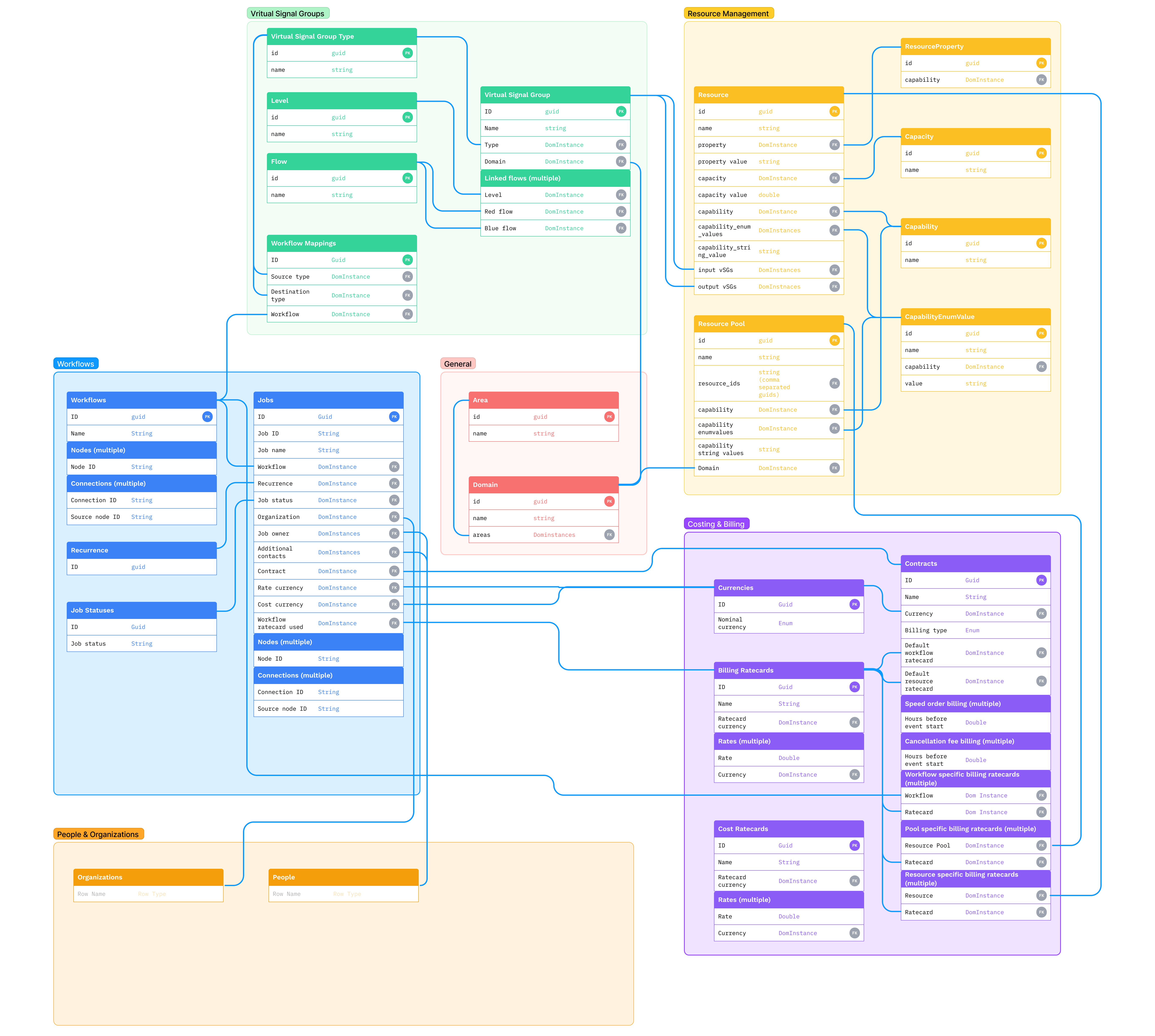
- Captures business and operational metadata in the DataMiner digital twin.
- Describes all data related to resources, pools, people, transponders, jobs, workflows, contracts, rate cards, etc.
- Will be extended to also include data related to service lineups, trouble tickets, change management tickets, assets, etc.
- Based on DataMiner Object Model (DOM) technology.
- Describes relations between data models.
- Data sets (instances) are backwards compatible.
- Extendable by linking customizable sample data models.
- DevOps engineers can create their own additional objects.
- Cornerstone knowledge for DevOps engineers.
- Documented on docs.dataminer.services
A new era of data-driven, automated,
and simplified media operations
dataminer.MediaOps seamlessly blends ICT with media technology and workflows. Central to its architecture is the concept of the digital twin of the media operation—housing all network statistics, metrics, counters, and configurations, coupled with vital business information like event schedules, asset inventory, playlists, electronic program guide (EPG) data, and more.
Its advanced design effortlessly handles the complexities of SMPTE ST 2110, while supporting various media transport standards including SMPTE ST 2022, SRT, SDI, ASI and L-Band, ensuring unparalleled scalability and flexibility.
dataminer.MediaOps integrates with:
Media processors and gateways
Media compression and transport
Satellite and IRD technology
Monitoring probes and multiviewers
Intercoms
SDI, ASI, L-Band routers
IP media fabrics
ICT technology (servers, network, storage and environmental)
PTP grandmaster and follower clocks
Cloud (IaaS, PaaS, and SaaS)
Business management systems
Traffic management systems
Playout systems
Third-party scheduling systems
Ticketing systems
Service management systems
Asset management systems and CMDBs
ERP systems
End-user devices (set-top boxes, players and apps, gateways, etc.)
And more
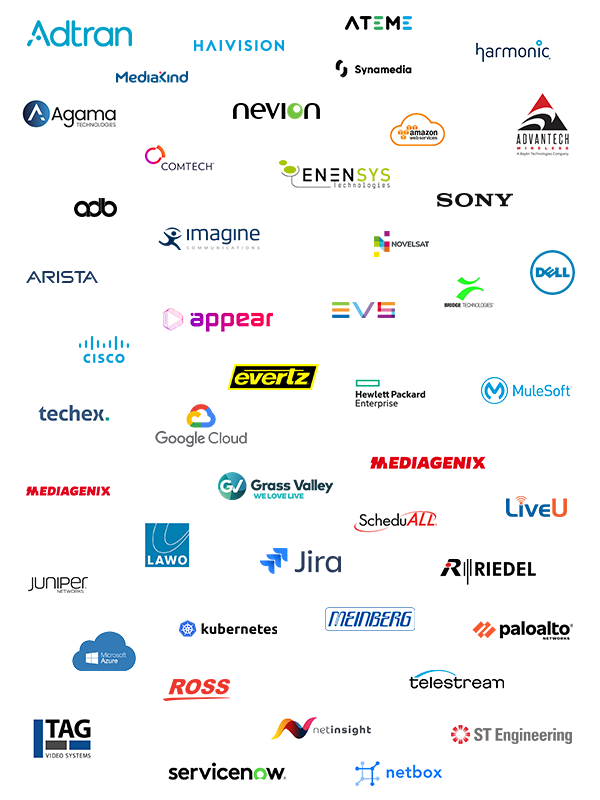
One solution,
infinite use cases
Draw inspiration from a wide array of dataminer.MediaOps use cases—and start envisioning your own!
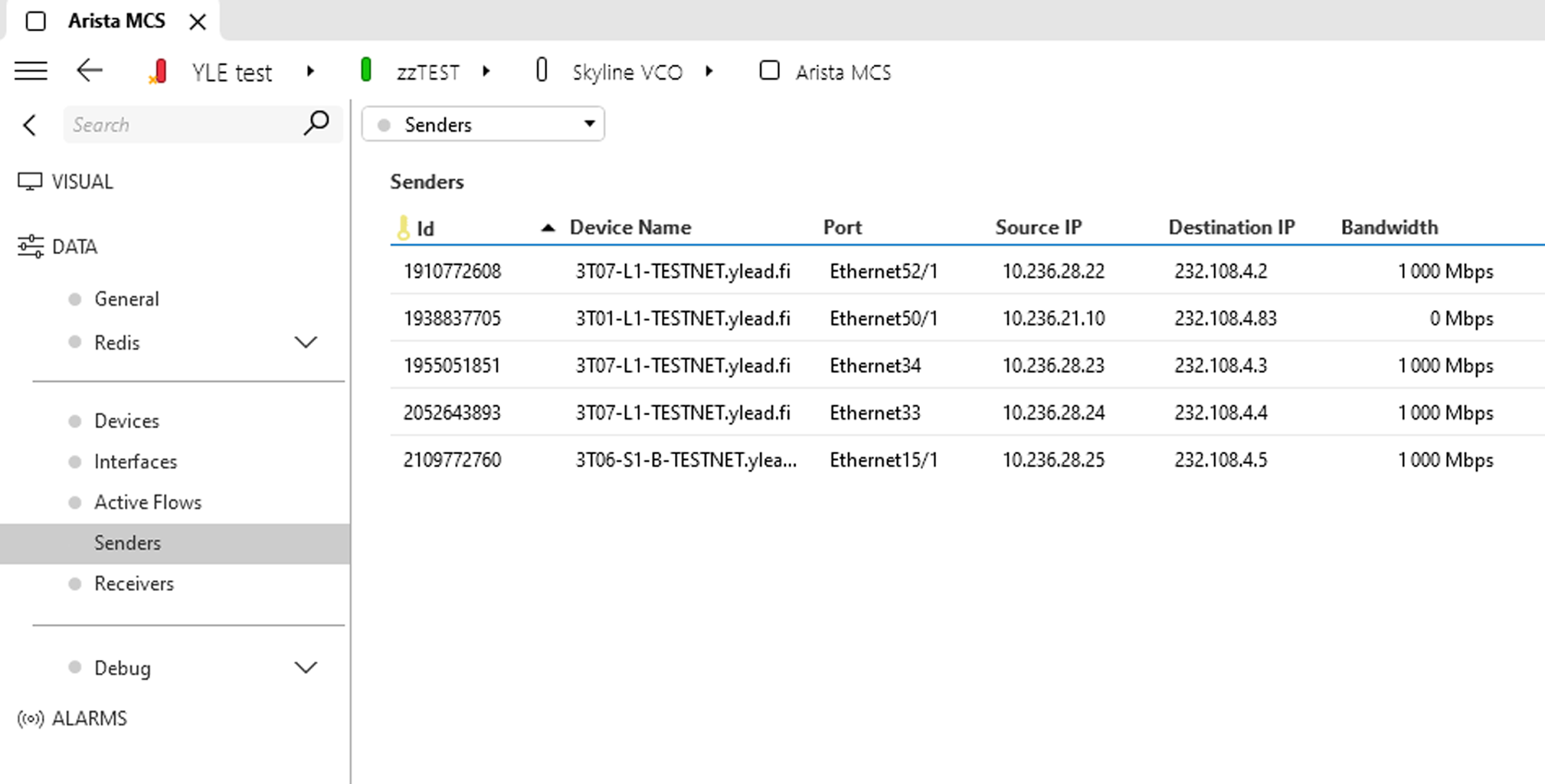
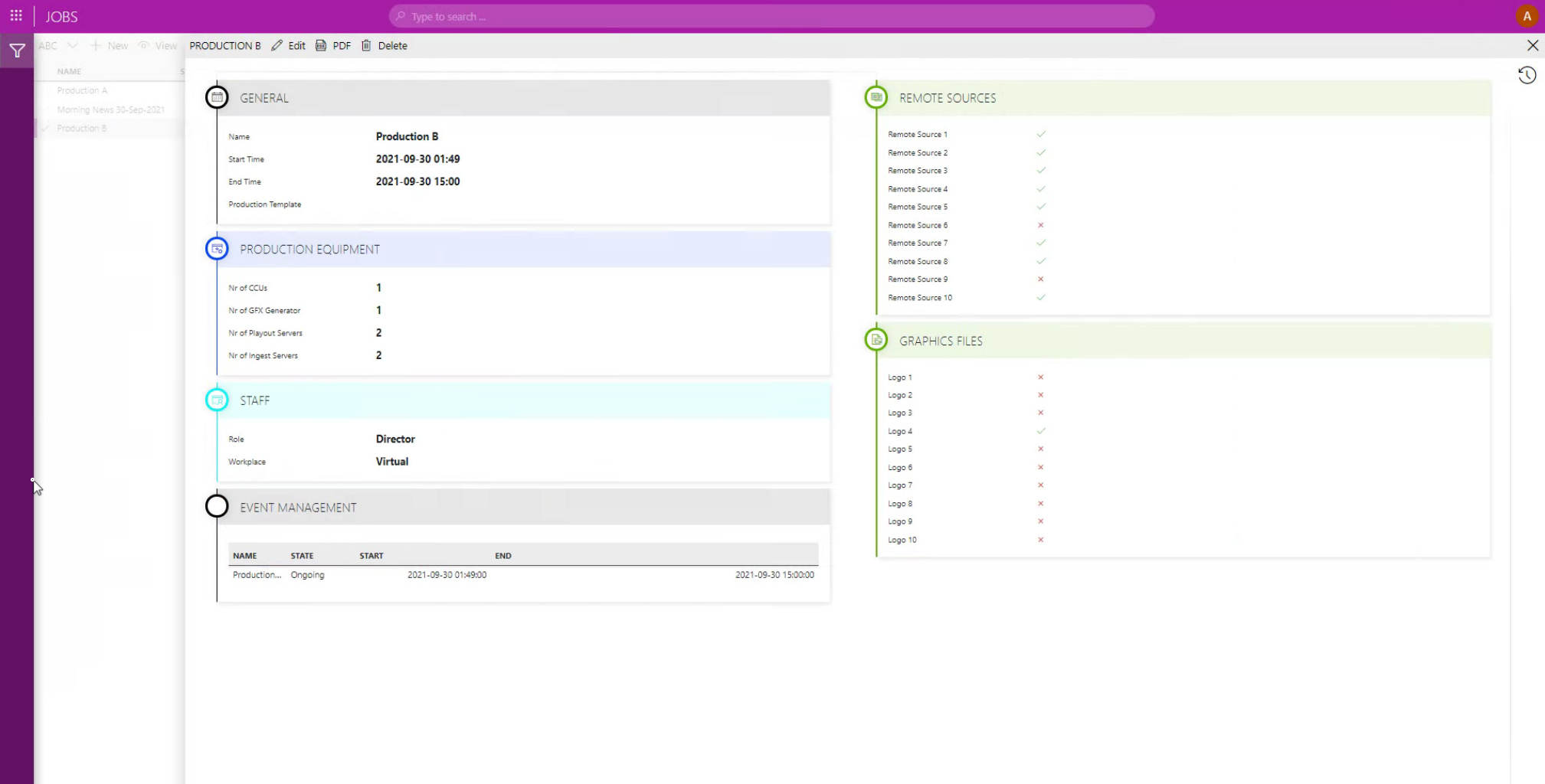
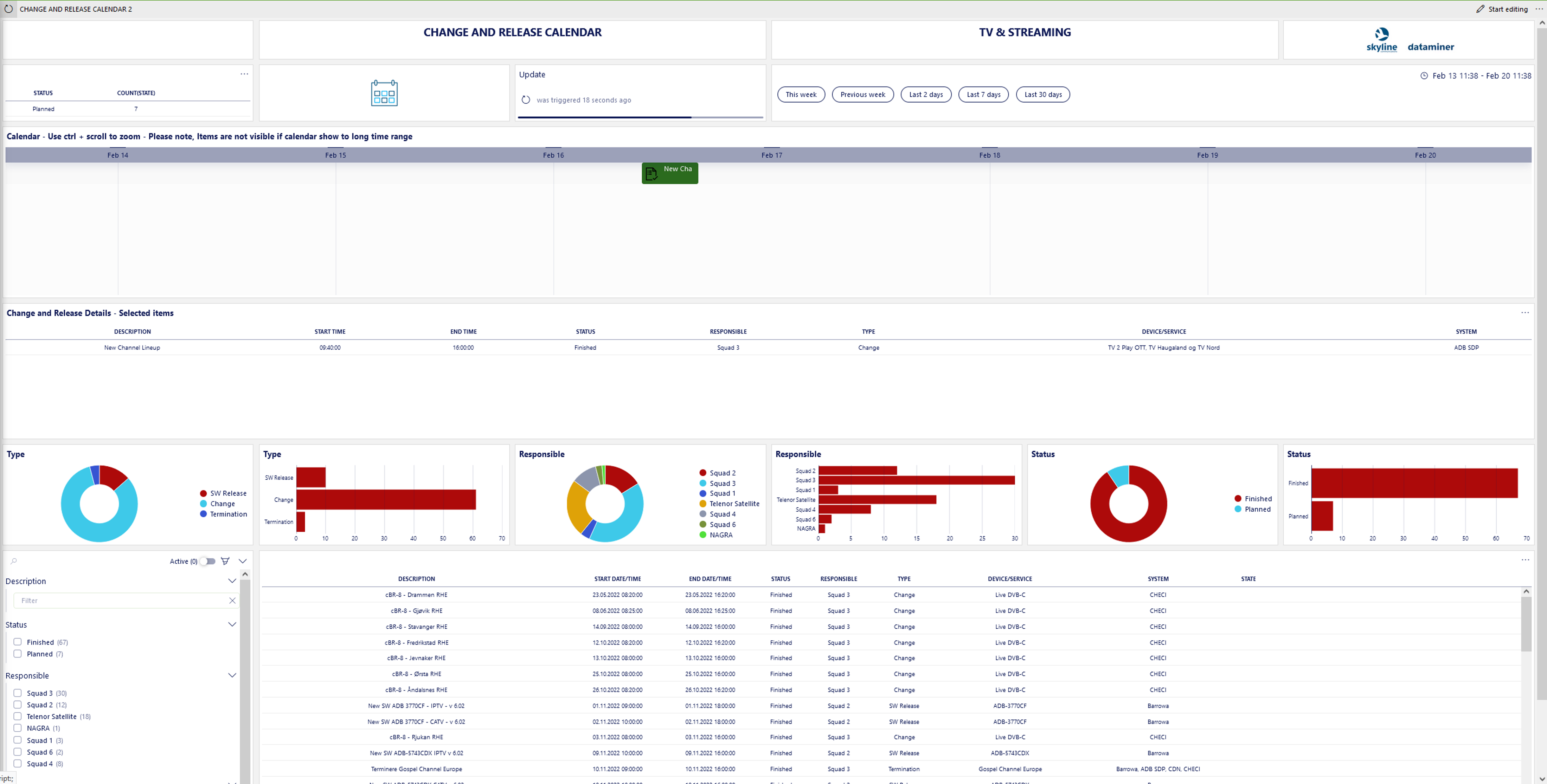
Use Case
Use Case
Use Case
Use Case
Use Case
Use Case
Use Case
Use Case
Use Case
Use Case
Use Case
Use Case
Use Case
Use Case
Empowering
Media Operations Teams
dataminer.MediaOps transforms operations by creating a better, faster, and more cost-effective environment that is enjoyable to work in!
Beyond technology
Unleash the power of an agile digital world
Agile culture and mindset
Goal-oriented, transparent, and continuously evolving our ecosystem thrives on an Agile culture, ensuring iterative value delivery.
DataMiner
DataMiner offers a wealth of easy-to-use functions for data acquisition and control, data processing, automation, and analytics (AI) as well as out-of-the-box media apps.
People
Join a vibrant community of learners and creators. It's not just about resources; it's about empowerment, innovation, and collaborative growth.

















